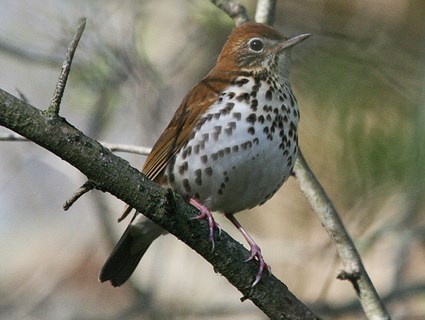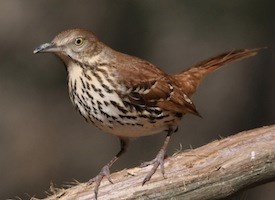Thursday, December 26, 2013
Tuesday, December 17, 2013
 |
| Photo: Kara Kosarski |
Dark-eyed Junco. The 30th bird found.
The Ordinary Extraordinary Junco: http://juncoproject.org/
Monday, December 9, 2013
Sunday, December 1, 2013
Red-tailed Hawk collides with window and gets new wings (Minnesota)
http://www.kare11.com/news/article/1044329/391/Hawk-receives-new-wings-at-Raptor-Center
Sunday, November 24, 2013
Wednesday, November 20, 2013
Friday, November 15, 2013
Collision Course
Scientists struggle to make windows safer for birds
Thursday, November 14, 2013
Wednesday, November 13, 2013
Indigo Bunting (Bldg. 11B). This male was likely born this summer and was learning his way south for the winter.
Indigo Buntings migrate at night, using the stars for guidance. The birds possess an internal clock that enables them to continually adjust their angle of orientation to a star—even as that star moves through the night sky.
The oldest known wild Indigo Bunting was 8 years, 3 months old.
(http://www.allaboutbirds.org/guide/Indigo_Bunting/lifehistory)
Tuesday, November 12, 2013
Bird-Window Collisions Increase Avian Mortality
“We have the solution. We just have to convince people that we have the power to take some action. I need people to take it seriously,” said Dr. Klem.
As human construction continues to expand and skyscrapers touch the
skies, prevention of avian mortality is becoming an increasingly
important issue. Buildings littered with windows have the opportunity to
take action against the creation of unnecessary victims.
Taking simple precautions can prevent the deaths of, quite literally,
billions of lives. Taking Dr. Klem’s advice, individuals can act as
catalysts for a better future for avian populations worldwide.
Monday, November 11, 2013
Not everything we find is depressing, or has feathers. Here is an eastern pipistrelle hanging out at one of the buildings. Photo: Mike St. Germain.
http://en.wikipedia.org/wiki/Eastern_pipistrelle
Thursday, November 7, 2013
Tuesday, November 5, 2013
Monday, November 4, 2013
Fox Sparrow (Bldg. 11D).
People have spotted individual Fox Sparrows in Greenland, Iceland, Ireland, Germany, and Italy. Some of these vagrant birds probably made part of their transatlantic journey by ship, after touching down to rest on a vessel far from shore.
Fox Sparrow fossils from the Pleistocene (about 11,000 years ago) have been found in Pennsylvania, Virginia, and at the La Brea tar pits in California.
The oldest Fox Sparrow on record was at least 10 years and 4 months old. It was caught and re-released by a California bird bander in 2003.
(http://www.allaboutbirds.org/guide/Fox_Sparrow/lifehistory)
Friday, November 1, 2013
Monday, October 28, 2013
Wednesday, October 23, 2013
Hermit Thrush (Bldg. 10D).
The Hermit Thrush has a beautiful song, you can listen here: http://www.allaboutbirds.org/guide/hermit_thrush/sounds
Subscribe to:
Posts (Atom)















































